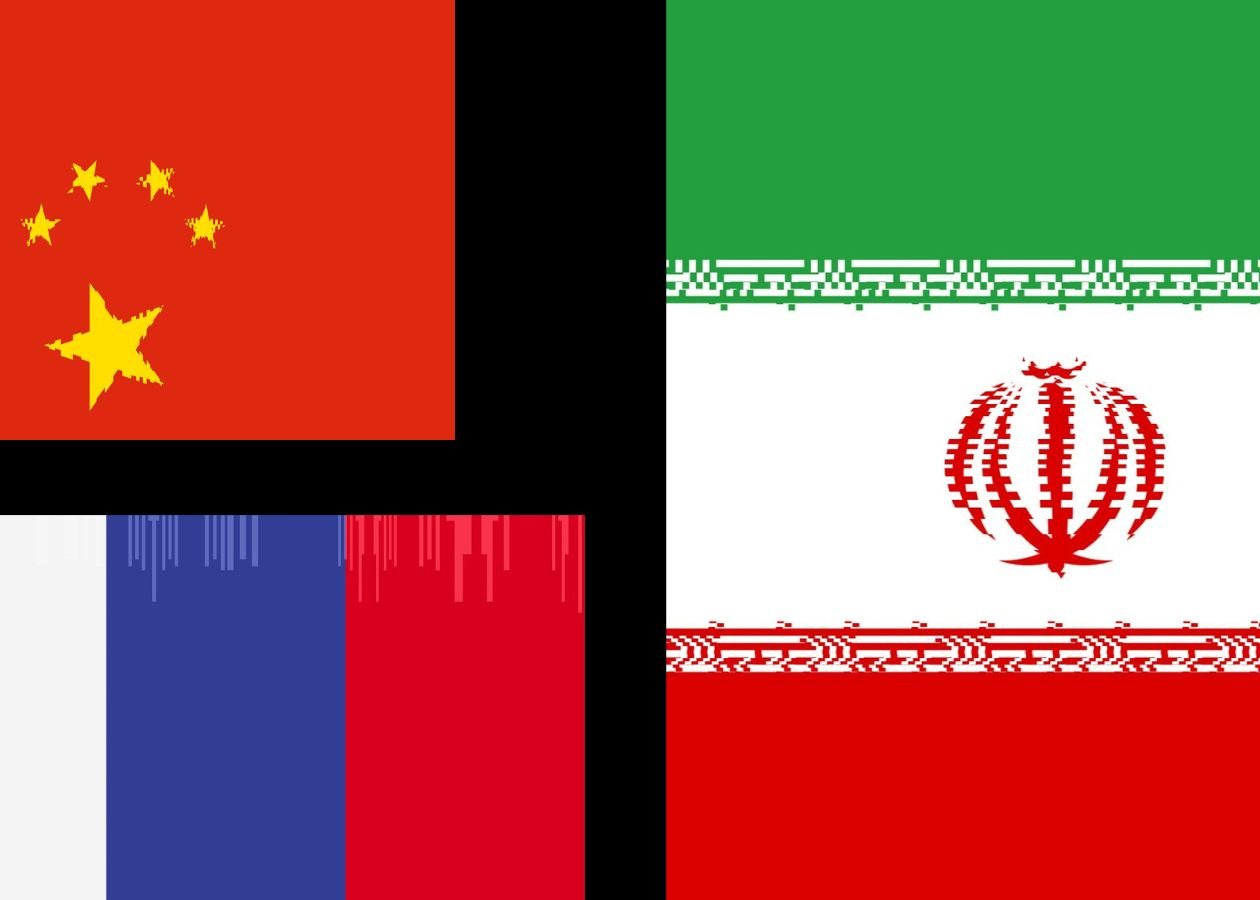October 7 Exposed an Authoritarian Axis
Before the Hamas attacks on Israel, Western policymakers refused to acknowledge a problem that ran from Gaza to Yemen through Iran, Russia, and China.
There’s a new US plan for Israel and Gaza. Can it work? Tune in to our next premium subscriber-exclusive Zoom call, featuring Palestinian, Israeli, and American perspectives about the war in Gaza and where Israelis and Palestinians go next on the second anniversary of the October 7 attacks. TODAY (Tuesday, 10/7) at 5pm ET/2pm PT. Register here.
Fatima Abo Alasrar is the founder of the Ideology Machine Project and a senior policy analyst at the Washington Center for Yemeni Studies.
When Hamas attacked Israel on October 7, 2023, the speed of regional alignment left little room for ambiguity. Within days, Hezbollah opened fire on Israel’s northern border, Iraqi militias struck US positions, and the Iran-backed Houthis in Yemen began targeting Israel and commercial vessels in the Red Sea.
What Western policymakers had long treated as isolated actors with independent grievances turned out to be a single, synchronized network—Iran’s Axis of Resistance, suddenly and unmistakably activated, with Russian and Chinese support as well.
It was the Houthi militia campaign that exposed this collaboration most vividly. For a group operating nearly a thousand miles from Gaza, and often described as autonomous from Tehran, the Houthis demonstrated military capability in their strikes after October 7 that they couldn’t acquire on their own.
For years, officials in Washington and European capitals treated the Houthi militia as a domestic Yemeni problem, contained within that country’s civil war. Iran’s role was sometimes acknowledged but consistently minimized.
Iran’s policy of denying involvement with groups like the Houthis became a convenient fiction that spared Western governments from confronting Tehran’s growing, destabilizing interests in the region.
A sense of groupthink emerged in policy institutes and in government. One International Crisis Group report confidently asserted that “The Houthis are not Hezbollah and, despite their publicly expressed sympathies for the Islamic Republic, have not developed a similarly tight relationship with Tehran.” A 2022 statement from a group of US senators opposing the re-designation of the Houthis as a foreign terrorist organization made no mention of the group’s Iranian patrons. Any suggestion—despite ample evidence—that coordination extended beyond Tehran to Russia and other powers was treated as the stuff of conspiracy theories.
The Red Sea attacks shattered that illusion. These were neither gestures of solidarity with the Palestinians nor emotional responses to events in Gaza; rather, they were an expression of longstanding capabilities, strategic positioning, and deliberate network design. The Gaza war served as a trigger, not a cause, activating a regional system built for precisely such a moment.
Since the attacks on Israel, the US government stepped up scrutiny on the so-called Axis of Resistance, sanctioning Houthi operatives for recruiting Yemeni civilians to fight for Russia in Ukraine under false pretenses. That scheme funneled money back into the group’s military operations and demonstrated the Kremlin’s aggressive pursuit of its interests and means to achieve them. The US Treasury Department also exposed a broader network moving tens of millions of dollars’ worth of Russian goods and weapons through Yemen.
More from The Next Move:
Iranian Revolutionary Guard Corps ships provided targeting intelligence for Houthi militia strikes on vessels that had switched off their identifiers.
Meanwhile, in April 2025—well after the Houthi attacks began—the State Department finally accused Chinese firms of supplying satellite imagery to the Houthis used to target vessels in the Red Sea. The revelation came late, suggesting either intelligence gaps or reluctance to confront Beijing’s role in enabling the attacks.
The result of all of this collaboration? over 520 attacks in the Red Sea by mid-2025. A 90% reduction in container shipping through the Red Sea. $1 trillion in disrupted trade and disruption at Israel’s Ben Gurion Airport and Port of Eilat.
This nefarious cooperation took place in plain sight. What was missing wasn’t evidence, it was the willingness and ability to understand the implications.
The architecture of authoritarian coordination
Tehran, Moscow, and Beijing have found it in their best interests to use chaos as leverage. As such, these states aren’t building an alliance in the traditional sense but rather constructing an informal transnational authoritarian system through the convergence of dissatisfied powers with a shared purpose of overturning the principles and rules that underlie the prevailing international system. Each claims a sphere of influence it believes the current order unfairly denies.
Despite clear signs of coordination and local cries of Iranian influence, Western analysis has been too quick to dismiss this coordination, viewing it as opportunistic rather than structural or ideological.
The logic is that historical tensions, whether China-Russia border disputes, Sunni-Shia sectarian divisions, or divergent economic interests, will prevent meaningful alignment.
This misses the fundamental point: these actors don’t need absolute unity or deep trust to coordinate against a common adversary. They need only tactical alignment and space for mutual support.
The coordination extends across three theaters simultaneously. North Korea supplied Russia with troops, 2.5 million rounds of ammunition, and ballistic missiles for use in Ukraine. Iran supplies Russia with combat drones, ballistic missiles, and manufacturing assistance for Russian drone factories. China and Russia continued joint naval exercises with Iran in the Gulf of Oman. China-Russia bilateral trade exceeded $240 billion in 2023, with Russia replacing Saudi Arabia as China’s largest oil supplier.
This alignment isn’t just logistical, it’s ideological. The same network that trades drones and oil also trades narratives, using every Israeli strike to reinforce its posture as the vanguard of “resistance” and is heavily invested in Russia’s vision for a multipolar world.
Israel’s military operations in Gaza and Lebanon—however one judges their necessity or proportionality—drive Axis recruitment. Tehran’s proxies don’t need to manufacture grievances when Israeli actions deliver them. This creates a perverse incentive: The more Israel strikes, the more the Axis can position itself as “resistance,” even as it exploits Palestinian suffering for its own regional ambitions.
The West’s next move
Western democracies can’t counter a coordinated network by treating each crisis separately. And it can’t counter it by withdrawing. The authoritarian axis (alongside Iran’s complementary Axis of Resistance) offers a clear alternative vision: spheres of influence, might makes right, sovereignty without accountability. The West needs to offer something better: a system built on values, not just transactions. The authoritarian axis offers money and weapons with no questions asked; the West’s advantage is offering partnerships that actually improve governance and people’s lives.
That means staying engaged, not as world police, but as the anchor of a system where smaller countries aren’t forced to choose between American neglect and authoritarian coercion. It means making governance, economic partnership, and security cooperation more attractive than what Beijing, Moscow, and Tehran offer. It means investments in institutions that work, in allies that matter, in the patient work of building alternatives to authoritarian influence.
Most fundamentally, it means recognizing that retreat isn’t neutrality, it’s ceding ground. The network doesn’t take breaks. It doesn’t go home. Every space the West abandons, someone else fills.
October 7 exposed a network that was already operational. The question isn’t how to manage this network but rather if the US can build a compelling alternative to it. That’s not just a strategic challenge. It’s a test of whether we can sustain the patience, coherence, and confidence needed for a competition measured in decades, not news cycles.
Combating the chaotic rise of authoritarian powers and proxies in the Middle East and Europe demands a long, cohesive strategy. Something rooted in an idea bigger than self-interest, a willingness to shape a world where autocratic power is contained not by slogans, but by steady, deliberate action toward a better order.
More from The Next Move:
Playing Russia’s Game: When America is Desperate for Deals, Dictators Win
Trump, Biden, and Obama all pursued premature deals with hostile regimes. If dictators want a diplomatic bargain, all they have to do is wait.
Anti-Woke Americans in Russia Follow a Path Paved by Communists
If you’re fortunate enough to be born in a democracy, there’s a lot you can do before uprooting your family to an authoritarian state.








This is brilliantly written –with a lucid analysis and a call to action—grounded in unwavering commitment, sustained engagement and timely, disciplined coordinated responses— to the coalition of liberal democracies. As the anchor of this endeavor, we, the United States need to re-train ourselves to think and plan long-term, and prepare to play the long game--- things at which we used to be very good.
Cheeto Didn’t Learn His Lesson In 2021
Let’s go back to 2020 when Cheeto after losing the election pulled all the stops including a ransacking of the Capitol building during the J6 insurrection when Cheeto called on his hoodlums to interfere with the certification of the election
As all the turmoil was being churned now disbarred Guliani and his Nazi cohort of lawyers filed and lost 61 lawsuits in court attempting to push Cheeto’s Big Lie agenda
Well it’s now 2025 and Cheeto is trying to militarize the streets of Democratic cities, first Los Angeles, then Portland, and now Chicago But the federal courts as they did in 2020 have turned the stupidity of the attempt to militarize our cities into what could only be termed sham legalese
So Cheeto being the bully he is, thinks that he can get away his military junta attempt and as JB Pritzker(governor of Illinois) has said that bringing the military is about fear and intimidation of the electorate in the runup to the 2026 midtems Pritzker also suggested on Maddow yesterday that he believes that the Nazi regime will confiscate voting machines